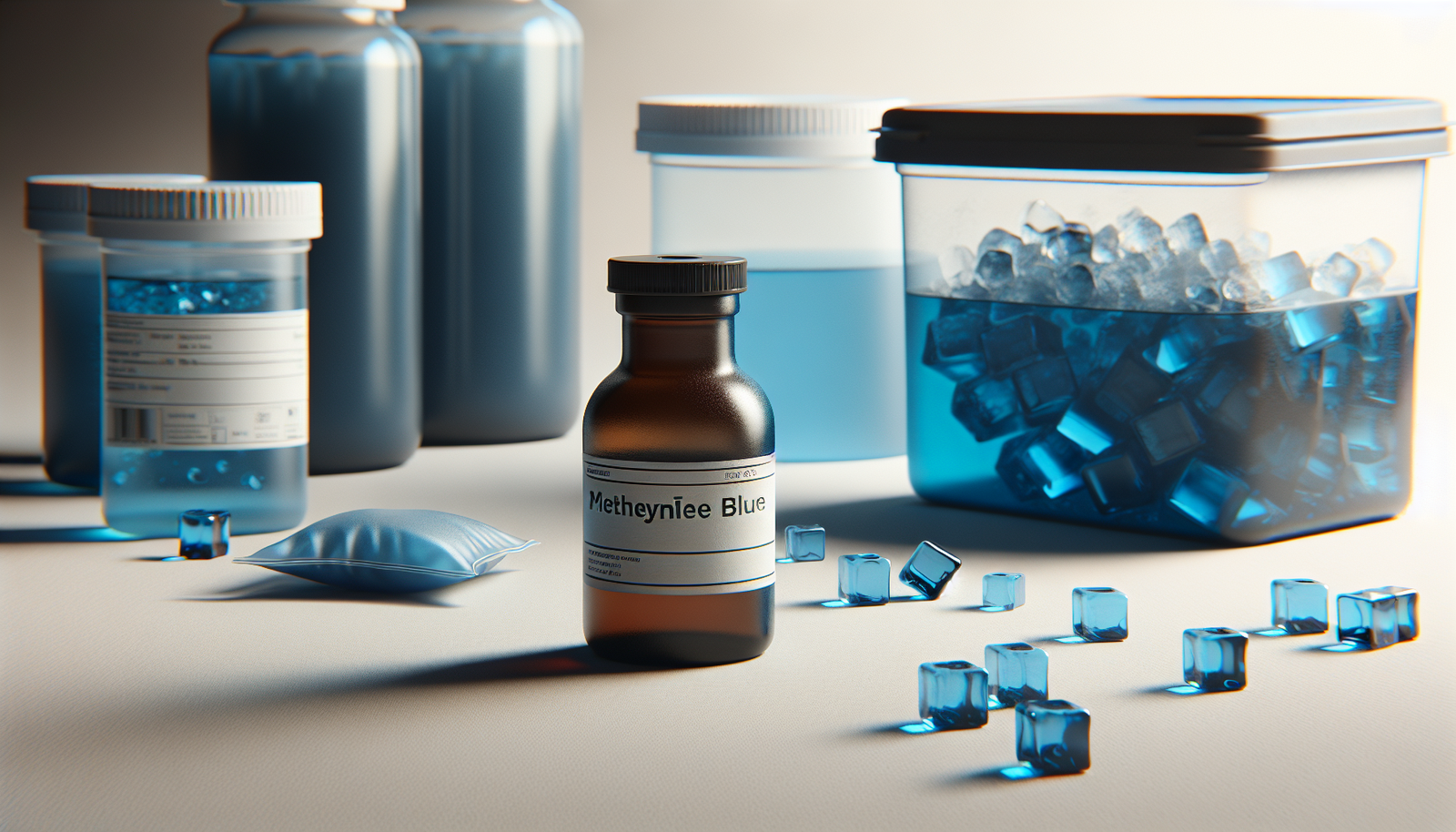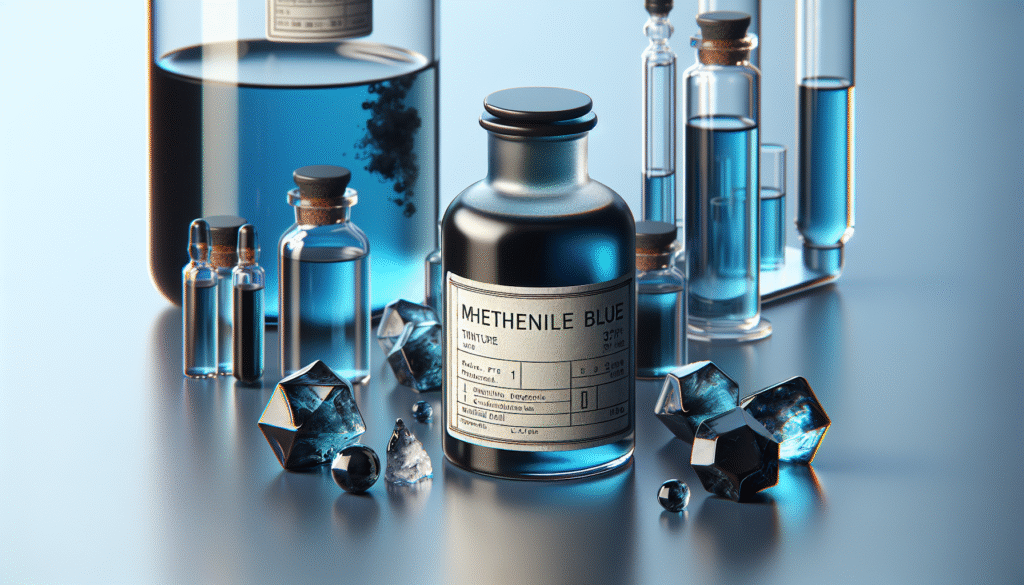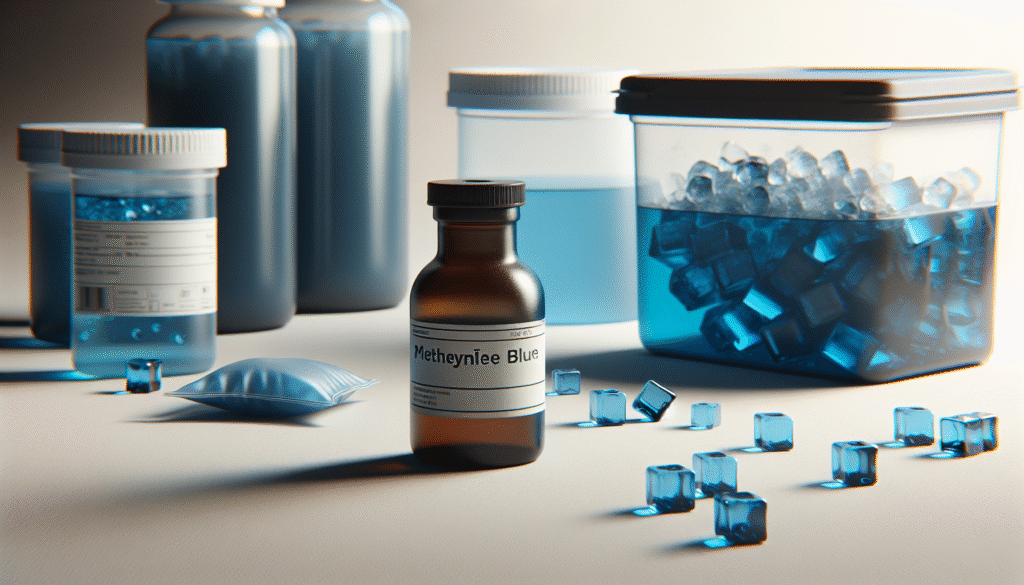
What steps can you take to ensure that your methylene blue maintains its efficacy and longevity? The proper storage of this compound is crucial, whether you are using it in a laboratory setting, a medical context, or even for hobbyist applications. Understanding the properties of methylene blue and the factors that influence its shelf life can drastically improve its effectiveness when you need it.

Understanding Methylene Blue
Methylene blue is a synthetic dye that serves numerous functions across various fields, from medical uses as a medication for certain conditions to its role in biological staining and as an industrial dye. It is essential to recognize what methylene blue is and how its chemical properties dictate how you should store it to maximize its lifespan.
Chemical Composition
Methylene blue, or methylthioninium chloride, consists of a thiazine dye with a molecular formula of C16H18ClN3S. Despite being crucial for numerous applications, the stability of methylene blue can be significantly influenced by factors such as light exposure, temperature, moisture, and pH level. Understanding its chemical makeup helps you appreciate how these conditions interact with the compound.
Applications of Methylene Blue
The diverse applications of methylene blue reflect its importance in various industries. Some common uses include:
-
Medical Use: Often used in treating methemoglobinemia, a condition where blood cannot effectively carry oxygen.
-
Laboratory Stains: Functions as a stain in histology and microbiology for various cellular components.
-
Aquaculture: Helps in treating fish diseases and fostering better water quality.
Recognizing where and how this compound is utilized can provide insights into why careful storage matters.
Factors Affecting Shelf Life
Several key factors can negatively impact the stability and shelf life of methylene blue. Understanding these will help you create optimal storage conditions.
Light Exposure
Light, particularly ultraviolet (UV) light, can degrade methylene blue, resulting in a loss of potency. It is important to store solutions and powders in opaque or dark-colored containers to mitigate this risk.
Temperature
Methylene blue is ideally stored in a cool, dry place. High temperatures can promote degradation, while freezing can cause precipitation or crystallization of the compound. Aim for a temperature range between 15°C and 30°C (59°F to 86°F) for optimal longevity.
Humidity
Moisture can lead to hydrolysis, resulting in degradation of the compound. Thus, it is essential to ensure that the storage environment is dry. Use desiccators or silica gel packets to control and reduce moisture levels.
pH Level
The stability of methylene blue is also affected by pH. Acidic conditions can lead to instability, while it remains stable in slightly alkaline solutions. Maintaining a pH between 6 and 8 is generally advised.
Recommended Storage Containers
Choosing the appropriate storage container is vital in preserving the quality of methylene blue. Below is a comparison of ideal containers:
| Container Type | Description | Benefits |
|---|---|---|
| Amber Glass Bottles | Dark glass that protects from light | Reduces light exposure |
| Polyethylene Containers | Plastic that is often resistant to moisture | Generally good for short-term storage |
| Tightly Sealed Vials | Airtight vials specialized for chemicals | Excellent for long-term storage |
Amber Glass Bottles
Amber glass bottles are your best bet for long-term storage, providing excellent protection from light. For research institutions or laboratories, opting for bottles that can withstand irregular temperature changes is advisable.
Polyethylene Containers
While these containers are convenient, they may not offer the same level of protection against light. Use them for short-term storage or when handling smaller quantities, as they can allow some light penetration over time.
Tightly Sealed Vials
Tightly sealed vials aid in minimizing air exposure, which helps prevent oxidation. If you handle methylene blue frequently, consider using vials to portion out and store necessary amounts to keep the bulk solution secure.
Proper Storage Techniques
Now that you understand the factors and container types, consider these essential storage techniques for maximizing shelf life.
Temperature Control
Store your methylene blue in a climate-controlled area. Extreme temperature fluctuations can further deteriorate the compound, and storing it in a refrigerator is not recommended unless advised otherwise.
Light Restriction
Whenever possible, transfer methylene blue into amber glass containers after purchasing. Ensure that your storage location is in a dark or shaded area, away from direct sunlight.
Air Exposure Minimization
After use, ensure that the containers are sealed tightly to limit air exposure. Reducing air allows for stability by minimizing oxidation. You might also consider vacuum-sealed containers for maximum protection.
Periodic Quality Checks
Conduct regular checks on your stored methylene blue for any signs of degradation, such as discoloration or precipitate formation. If the solution appears cloudy or has changed color, it might be time to replace it.

Disposal Considerations
Understanding how to store methylene blue also involves knowing how to dispose of it safely and responsibly when it has reached the end of its usable life.
Local Regulations
It is essential to familiarize yourself with local guidelines regarding the disposal of chemical substances. Many regions have specific regulations in place that must be followed.
Safe Disposal Methods
Generally, methylene blue can be neutralized before disposal. Consider the following methods:
-
Chemical Neutralization: Neutralize with a compatible chemical prior to disposal.
-
Hazardous Waste Disposal: If you’re unsure, consult your local waste disposal facility for guidance on hazardous chemical disposal.
-
Biodegradable Options: Research biodegradable alternatives if applicable for your applications. This step might not be feasible with methylene blue, but it’s worth considering.
Conclusion
Storing methylene blue effectively is not just about following simple guidelines; it is about understanding the nuances that make this compound stable over time. The steps you take to store it, from choosing the right container to maintaining temperature and avoiding light, are crucial for maintaining its efficacy.
By paying attention to the environment where you store your methylene blue and checking its condition periodically, you can ensure that it remains a reliable tool for your needs, whether in a laboratory, medical, or industrial context. Taking these measures will protect your investment in the compound and, more importantly, ensure that it serves its purpose effectively when the need arises.
Your proactive stance in managing methylene blue storage can lead to successful outcomes in your projects, reinforcing the importance of maintaining chemical integrity.